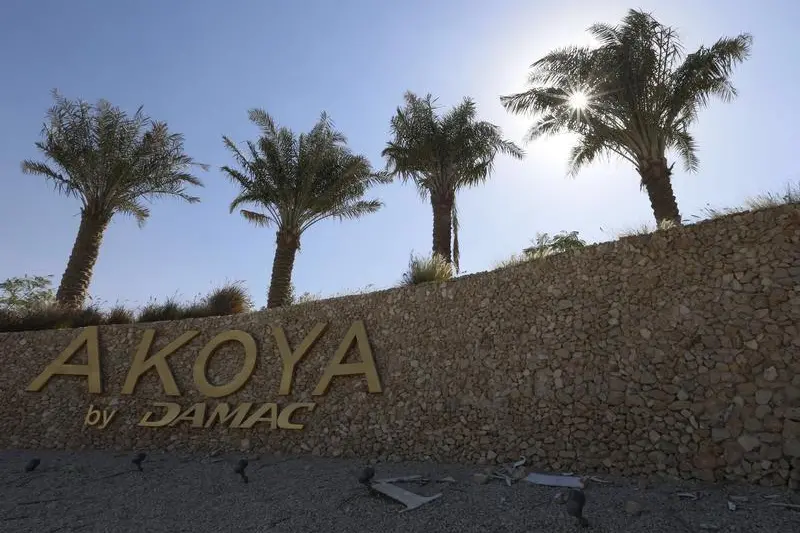PHOTO
Electronic tendering (or e-tendering) has nearly halved the time from tender to award, a United Arab Emirates-based luxury real estate developer has said following implementation of the internet-based system.
Dubai-based Damac Properties has recently transformed its tendering and procurement process from a traditional paper-based procedure to an e-tendering system.
E-tendering facilitates a paperless tendering process by issuing tenders, receiving and evaluating bids, and awarding contracts through an online platform.
“If I would say before it would take one month (to award a contract), now it will take us 18 days,” Mohammed Tahaineh, senior vice-president of Damac Properties’ commercial arm, told Thomson Reuters Projects in an interview conducted in September.
Tahaineh said the company has been using the system over the past six-to-12 months, which has resulted in significant time saving, better analysis and negotiation of contracts.
How it works
Contractors register to access project tenders on Damac’s e-tendering platform.
“They will register, they will get an alert for the tender, and they will see the (tender) documents through a link,” Tahaineh said.
In addition to the benefits, the most visible difference is that the new system is paperless.
“Maybe you’ll see it before with 15 to 20 boxes,” Tahaineh said, describing a typical bid submission.
“You know some BOQs (bill of quantities) are around 1,000 pages… now it’s paperless. If you have six bidders you need people to fill it by hand, where maybe they make mistakes. The advantage now (is) it’s a more transparent system. It’s faster because you get your (bids) comparison immediately, and you can focus on analysis of the tender instead of wasting the time filling the data.”
Analysis, addendums and accuracy
The ability to instantly compare and analyse bids at the click of a button also helps developers identify pricing areas that appear excessive or out of proportion.
“Sometimes the contractors make mistakes, they price some items low or high, and also it depends on the human (error),” Tahaineh said.
“We need the contractor to price in the right way. We highlight to the contractor that, ‘look, we notice that you priced this item in the bill of quantity too high, which means your understanding may be wrong for the specification’. So we arrange for (a) technical meeting with their team to explain to them the item, because maybe it’s not clear in our documents, maybe it’s not clear in our specification.”
Tahaineh said e-tendering has helped both Damac and the contractors it works with to spot such issues.
“Before, it required a human in order to highlight it to you and to give you many Excel sheets to review it,” he said.
“Now it’s a matter of pushing one button… we are becoming more and more accurate on analysis and negotiation with the contractors,” he added.
“Procurement is a very sensitive issue and it should be accurate.”
The portal also sends immediate notifications on addendums and it facilitates sharing of questionnaires from bidders.
In the traditional process, if there are changes in design, for example, addendums are sent to each contractor. It is typical, then, for the developer to have to follow up to check if the contractor received the addendum, and contractors sometimes miss them, Tahaineh said.
With e-tendering, contractors receive alerts when an addendum is sent through the platform. The developer is then able to view when a contractor opens the addendum, automatically confirming receipt.
“The easiest part of it also is usually if you are doing changes in the design and then an addendum is sent to the contractor, then they are going to re-price it,” Tahaineh said, adding that the online system allows Damac to generate easy comparisons between previous and new rates submitted by bidders.
He said the traditional manual process of comparing changes in BOQs between contractors as a “nightmare”.
Historical data
In the long run, e-tendering has also helped Damac to create its own in-house rates library for building materials.
“We take what the contractor is submitting and we use it in our (materials rates) library,” Tahaineh said.
He said that Damac now has “a huge database” of rates from the market, which continues to be updated based on the new tenders.
“If we want to compare it (rates) between what we have now and what we have six or eight months before, we can see where the material (prices) increase,” Tahaineh explained.
Suppliers are also able to register and submit their prices on the system, further enhancing the library and making it easy to identify design constraints.
“Sometimes the rates itself give you an indication about where you have over-specified,” Tahaineh said.
After decades of submitting bids in a traditional paper-based format, Tahaineh admitted that convincing contractors to switch to the new electronic system was a tough sell.
“At the beginning it was not easy,” he said, adding that many resisted the change initially.
However, Damac organised several training sessions and remained persistent.
Tahaineh said that contractors now admit they prefer e-tendering and that it also benefits them in terms of building their own respective reference libraries for bids.
In a press statement issued on Tuesday, Damac said that it had awarded contracts worth more than 350 million UAE dirhams ($95.3 million) worth of new contracts at Akoya Oxygen – its 55 million sq ft project off Al Qudra Road.
Damac awarded a contract to Towers Technology Contracting to carry out main works for 448 villas, and it awarded a deal to Nael Construction & Contracting to build roads and infrastructure around phase six of the community. The developer said in the statement that these awards followed on from a 628 million UAE dirham contract awarded in August to Arabtec Construction to build 1,296 villas on the same project.
A new report on the UAE’s construction market by Faithful + Gould said that if contract awards do not pick up substantially from the $26 billion worth of projects awarded in the nine months to date, total awards for 2017 are likely to fall below the $45 billion awarded last year.
The report said that increased activity in the final quarter is likely, though, and that “tendering activity is starting to pick up in the UAE, although delays in awarding works remain a concern”.
© ZAWYA 2017












